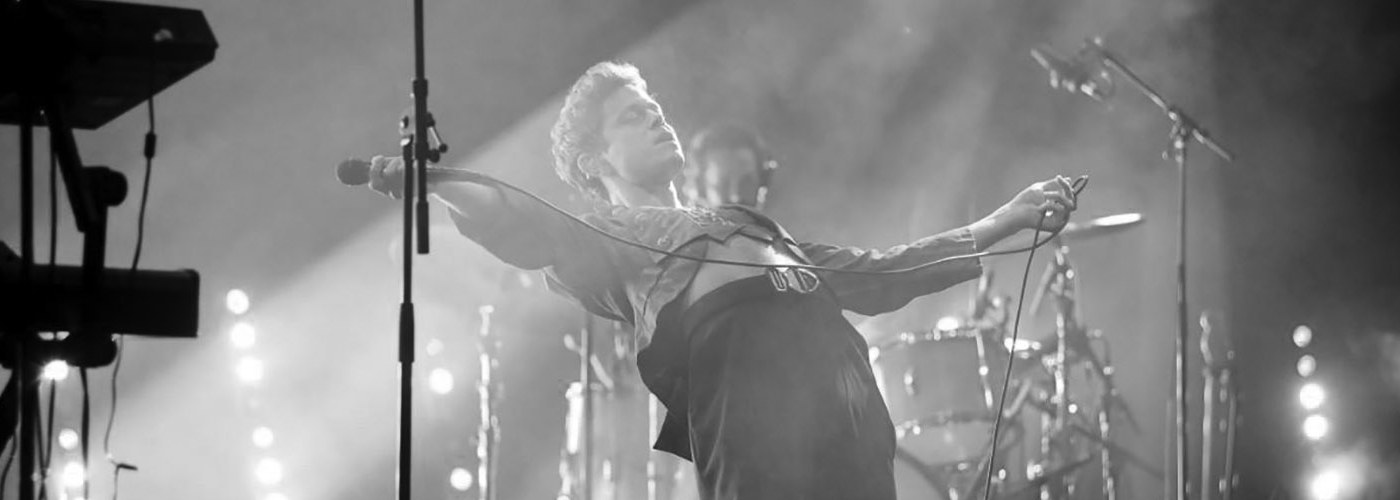Adalya Nash-Hussein on Telling Story, Telling Emotion
One of our 2018 Writers-in-Residence, Adalya Nash-Hussein reflects on her interpretation of Ensemble Sacamano’s recent performance, Masque of Red Death in the Primrose Potter Salon, inspired by her personal experiences with music, emotion, storytelling, technology, language and growing up.
I might be the youngest person to remember MSN messenger. Even though we had Facebook, for some reason people in my class preferred MSN pretty much right up until it was discontinued halfway through high school. I started school early, so that’s why I might be the youngest, unless the year level below me used it too, which I guess they might have. I know reminiscing about defunct social media platforms is cliché at this point, but I so vividly remember the features of MSN that it feels almost like a landscape to me, like a physical space. I remember carefully changing the colour of my chat font. I remember watching my friends flick off and online. I remember messaging ‘hey’ or ‘what’s up’, wanting to talk but with nothing particular to say.
Unlike on Facebook, the opportunities for self-presentation were small, somehow rendering them all the more mystifying and powerful. Every time I logged on, I would slowly read through the statuses of girls I found intimidating. They usually had fragments of lyrics or out-of-context in-jokes or professions of emotion to whoever they were dating that particular fortnight—always surrounded by a set of punctuation marks that felt like code for ‘cool’ in a language that was effortless to them. I remember tracking how often their statuses changed, analysing what that change meant. I remember when you could set your status to automatically update to the song you were listening to, or at least when we discovered you could do that. This was around the time when it seemed important to let people know you were into music.
Being into music wasn’t the same thing as playing music for some reason. I’d played violin since I was six or seven, a fact that, if anything, only undermined my capacity to be into music. I kind of didn’t talk about the violin at school, or when I did, I talked about this electric violinist, Emilie Autumn, who I didn’t really like, but who looked like an angry fairy. I tried to convey that I was into music by wearing a blue, badge-covered vest over my billowing school polo shirt. I made the badges myself, covering existing badges in handwritten slogans and liberal amounts of tape. Some of the slogans were for specific bands, but most of them were more general expressions of musical interest, loosely modelled on the quippier statuses from MSN. The vest counted as uniform because it was school colours, but I still felt rebellious wearing something that wasn’t actually uniform.
As we got older, other mediums and broad topics became personality traits—film, military history, atheism—but it never felt quite the same. While a ‘film’ personality was as much of an affect as a music one, it relied on a competitive accumulation of cultural and technical knowledge that music did not. Being into music, at least in those early days, was about a depth of passion rather than breadth.
More than other artforms, music is generally spoken of in terms of feelings, instead of story—or rather, the depth of critique at which story and feeling are spoken of is reversed. In my early teens, I liked books about magic, movies about falling in love, and music about I don’t know, probably breakups and sex. I liked music that made me feel angsty and jubilant. Finding story in a piece of music, often even if it had lyrics, has always felt to me like a flash of deep intimacy, like déjà vu of somebody else’s.
Like words in language, music has a lexicon of figures—or ‘topoi’—that mimetically or by convention become vocabulary for the non-musical. Musicologists comb through treatises and historical documents to build worlds of meaning that would have been obvious to listeners at the time. As modern listeners, signs have often lost connection to their signifieds, or have come to signify something else entirely. Much of what we now hear as ‘Mozart-y’ would at the time have been heard as pastiche—dialogue between church, military and folk sounds. Other references sustain. ‘Sigh’, ‘lament’ and ‘pianto’ topoi all describe despair via a cascading descent in pitch, like wailing, sobbing
I like hearing these references and seeing them, making them specific, making them mine.
Berlioz’s Symphony Fantastique: the dramatic strike of the guillotine, the comedic plops of the head along the ground.
Tchaikovsky’s Sleeping Beauty: a slinky black cat in an alleyway, sharing old takeaway with a friend.
Caplet’s Conte Fantastique: a villainous aristocrat gazing intently from a window at the top of a tower. A thick, sinister fluid pulsing up through the floorboards of the ballroom.
The Joachim Cadenza to Mozart’s Violin Concerto in A: somebody with a crush. They’re trying to hold back but they’re really excited. Maybe they’re telling someone they’re intimidated by about it.
Jaunty music in 3/4: Pirates of the Caribbean. I played five different arrangements of the soundtrack in my early adolescence and now everything sounds like it I guess.
Prokofiev’s Death of Tybalt: Mum and I wielding wooden spoons. We’re duelling and then she falls back into an armchair as dramatically stab at the hollow between her arm and her chest.
Dvořák’s Symphony No. 8: an oversized bubble floating across a field, a three-dimensional version of that desktop background from Windows XP.
Mussorgsky’s Pictures at an Exhibition: Mum and Granny in a concert hall. My mum using hand gestures to show which picture is being played, walking her fingers along Granny’s leg during the Promenade.
You might also be interested in
-
Adalya Nash-Hussein recounts her experience watching pop-provocateur Perfume Genius.
-
Adalya's second piece as a 2018 Writer-in-Residence
-
Listen to the podcast now


